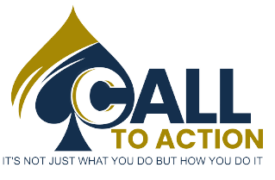Creating compelling business presentations can be daunting, especially when aligning content to rigid design templates. If you ever sensed your core message getting overshadowed by the allure of design elements, like a proverbial tail wagging the dog, rest assured you are not alone in grappling with this challenge. In this article, we will delve into the complexities of business presentations and explore practical approaches to strike a harmonious balance between content and design. By the end, you’ll be equipped with a toolkit that ensures your message remains the focal point of your entire presentation.
The Challenge of Content Overwhelmed by Design
Whether you utilize PowerPoint, Keynote, or other electronic slideshow tools, one common pitfall in business presentations is the inadvertent shift of focus from content to design. It’s similar to the aforementioned tail-wagging dog, where the visual elements take precedence, leaving the core message lost in the slides. Presenters often grapple with templates that, while visually striking, make it hard to understand the narrative and critical ideas. As a savvy professional, it’s rewarding to understand that navigating clients’ presentations is not just about creating beautiful slides but an art form in itself.
An aptly customized content can be your lucky charm, not just to drive an authentic connection but to convince your audience that those ideas are worth investing time and resources in; you want them totally immersed! Yet, the challenge remains – how do you ensure your content takes the spotlight without compromising on the appeal of design aesthetics? Let’s explore.
Strategies for Content-centric Presentations
To circumvent the challenge of design overpowering content, consider implementing the following strategies:
Use Questionnaires to understand Clients’ needs
While templates are essential for efficiency and not reinventing the wheel every time we repeat a process, it’s also super important to make sure you start by understanding the client’s needs first. Imagine it as a crucial first step before embarking on a grand adventure; you wouldn’t set sail without a map, would you?
There is always extractable information that will help you connect and align your service with a client’s business needs and goals. I often start with a well-thought-out questionnaire intended to help drive the conversation, not dictate the conversation. Also, the process of formulating the questionnaire helps ensure you are prepared for the client meeting, and just like turning on the GPS for success, you’ll be well-equipped with the information needed to present your ideas.
Note: Always recheck your plan or questionnaire and make sure you have a thorough understanding of the challenges before providing a recommendation to align with the client’s needs. In the IT sector, this will often involve a technical deep dive.
Building Rapport by Identifying Clients’ Interests and Challenges
Find something the client is interested in talking about. This could be about a challenge they are having or something fun they would like to do. If it is something fun, enjoy listening to their story and engage where you can. This will allow them and you to ease into a more serious conversation.
If it’s a challenge, listen and ask some probing questions to better understand and perhaps find ways you may be able to help them in the future, but don’t pitch. Your goal is to understand their needs so that, later, you may build a recommendation from the information you have gained.
Ensure Alignment
Double-check your vital points before you present them to ensure alignment. I usually like to ask for permission to re-engage if I have follow-up questions before presenting. If you feel confident that your recommendations will align well with the client’s objectives, offer to review the agenda before presenting. This will help ensure you don’t miss key points that they hoped you would address.
Simplify Visuals
While visually appealing slides can enhance engagement, the key is to avoid clutter and unnecessary design features, ensuring that your message takes center stage. Opt for visuals that seamlessly complement your narrative, and steer clear of anything that might overshadow the core of your presentation. Remember, simplicity not only aids comprehension but also enables a stronger connection between your audience and the message you’re delivering.
Use Consistent Branding
Maintain a consistent visual identity throughout your presentation. This includes colors, fonts, logos, and elements that are exclusive to your brand; this augments overall aesthetics. Consistency fosters a cohesive look without distracting from the content. By consistently applying your brand elements, you not only establish a solid visual identity but also enhance the overall professionalism and polish of your presentation. This visual continuity keeps your audience fixated on your core message without being distracted by visual changes.
Practice Conciseness
Strive for brevity in both content and design. A concise presentation ensures that your audience remains focused on key points without feeling overwhelmed. Like a well-crafted piece of art, a succinct presentation draws the viewer in, keeps them engaged, and ensures that every moment spent absorbing your content is purposeful and impactful. This approach has been proven to make your narrative compelling and effortlessly digestible.
Seek and Incorporate Feedback
The real art of communication is listening to feedback and digging deeper to truly understand the person and their concerns, challenges, strengths, weaknesses, fears, and goals. Once you have the confidence to stray away from the canned process and listen to your client, you will be poised to understand their goals better and, from there, determine how you can help them and what recommendations will follow. However, external perspectives can help highlight areas where design might overshadow content, and vice versa.

How can Call To Action LLC Help?
At Call To Action LLC, we understand the intricacies of service delivery performance and have years of experience in offering effective MSP advisory services. As an MSP executive, Dori Spade understands that the key opportunities for improvement are to increase revenue and profit successfully, increase client retention and satisfaction, and build a great team culture.
We’ve significantly succeeded in supporting MSPs to identify growth opportunities, create strategies to achieve objectives and boost the organization’s leadership, team, and service delivery performance. Get in touch with Dori Spade now to learn innovative ways to grow your company and increase your bottom line.



